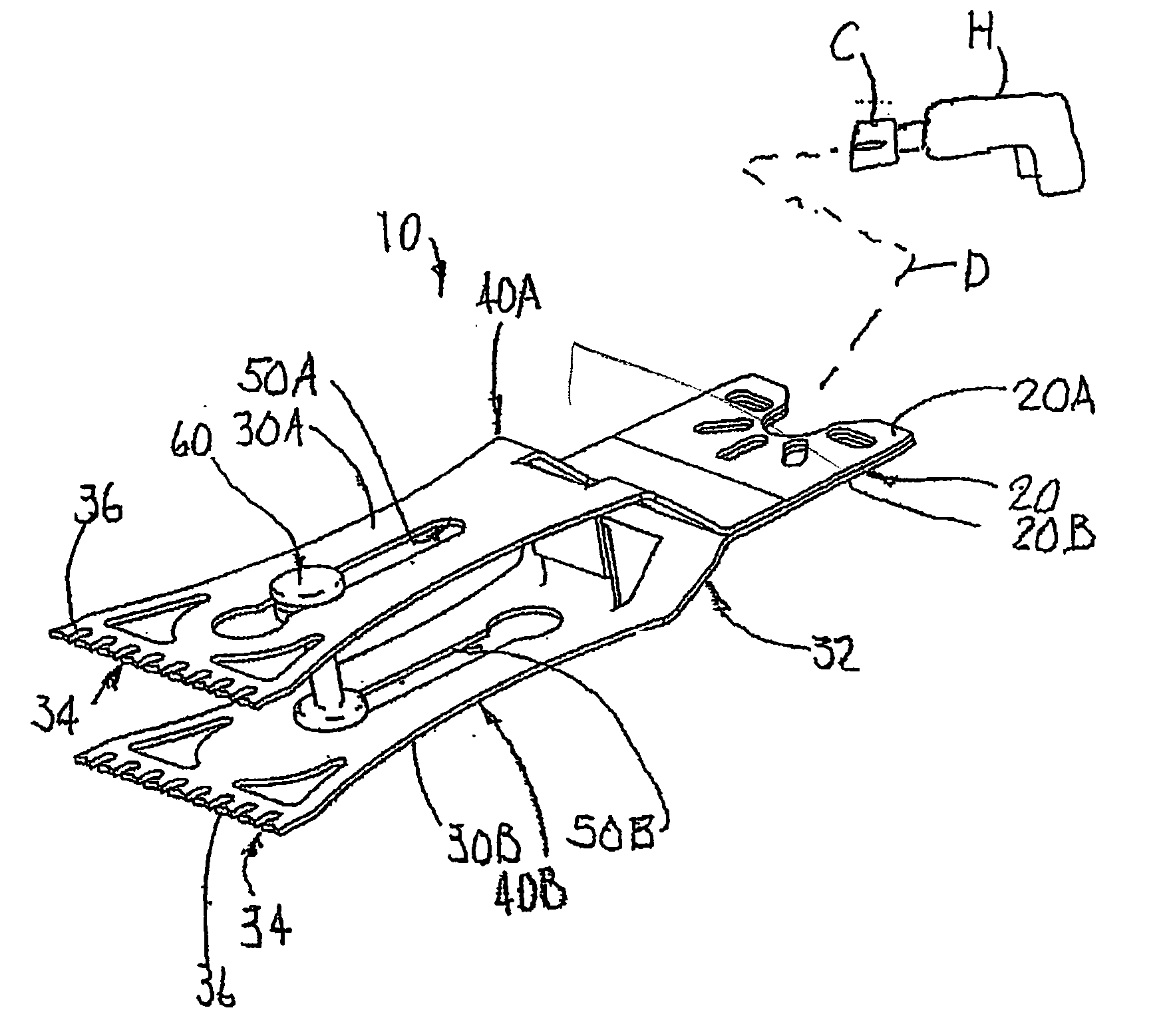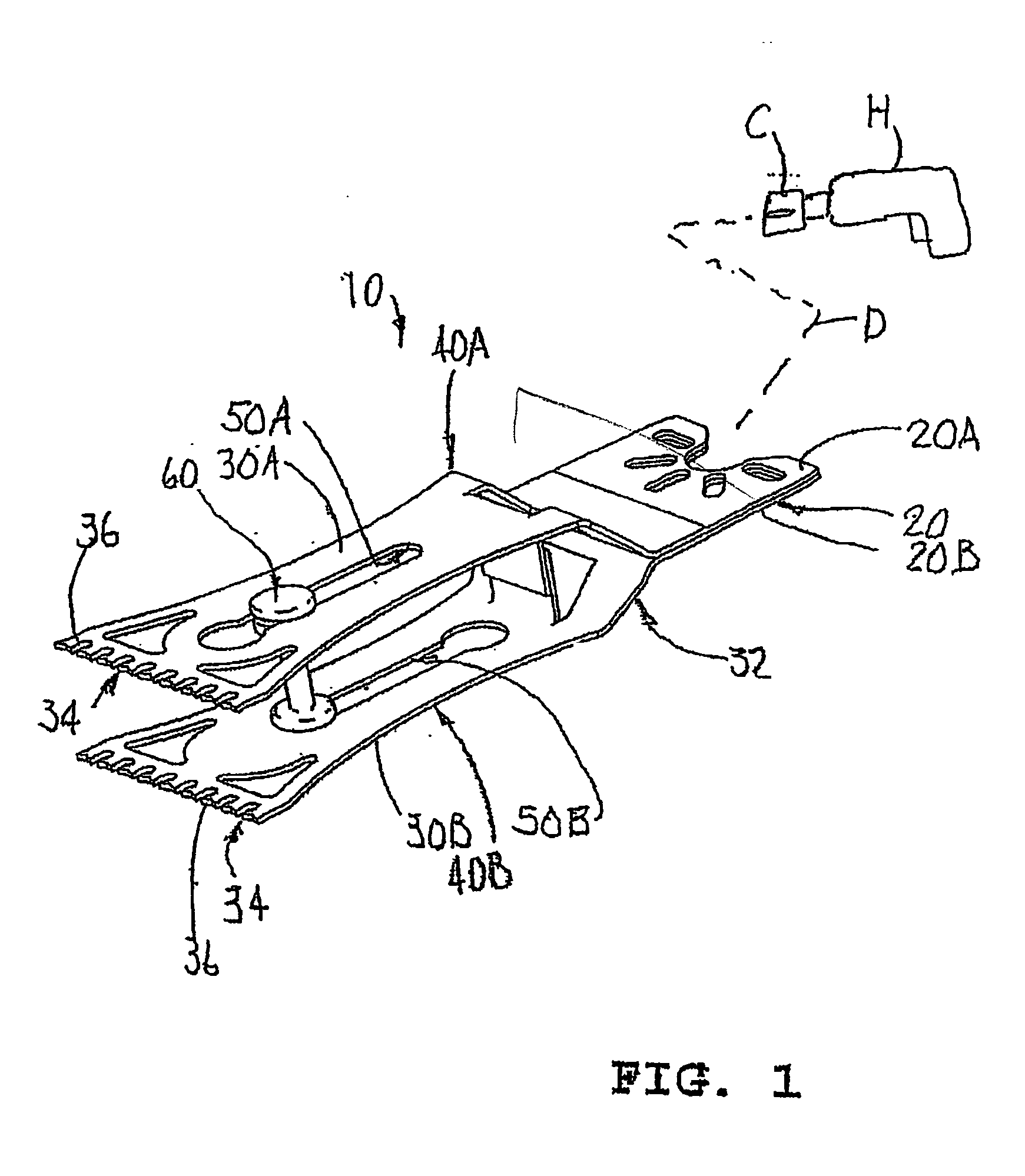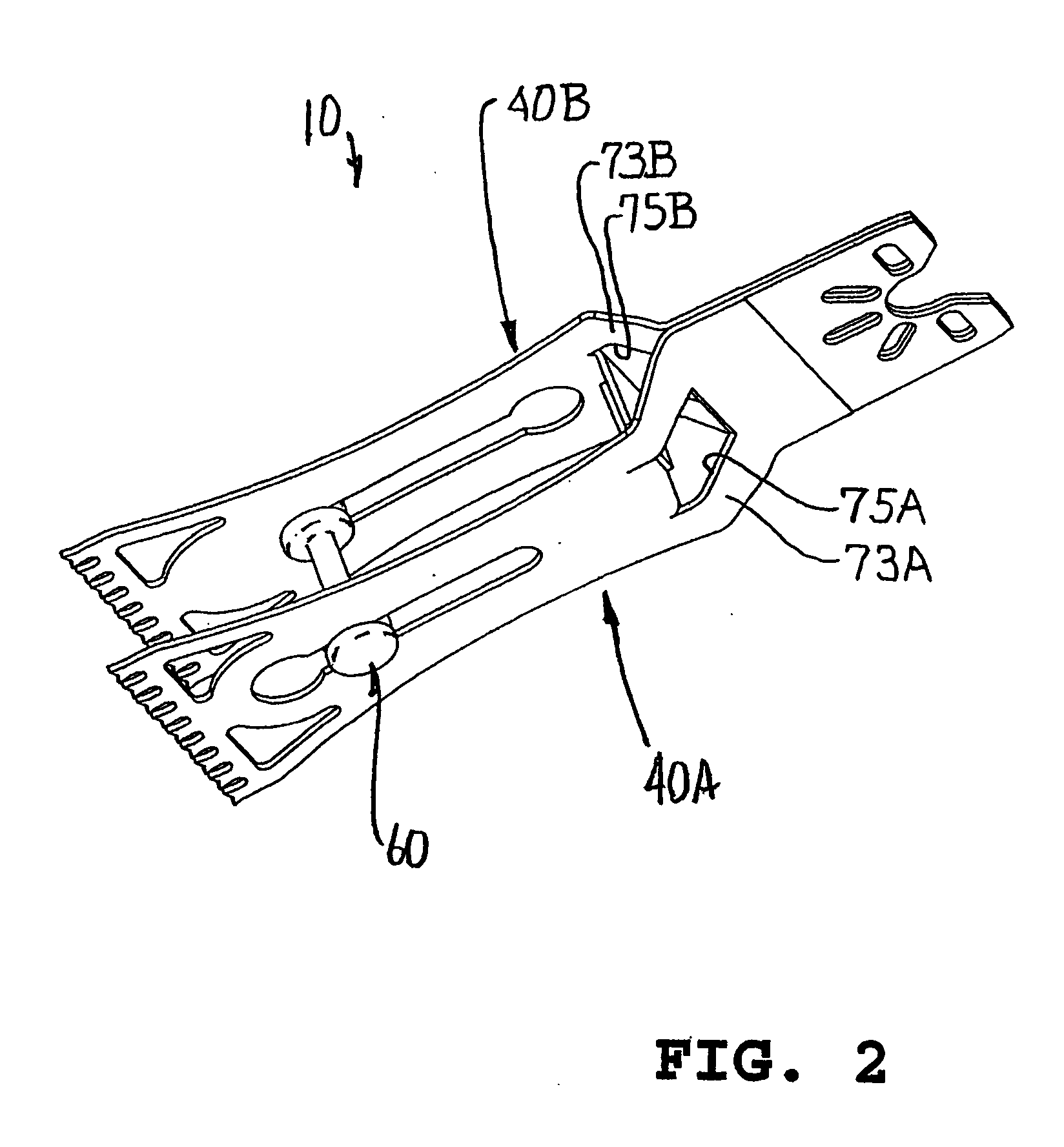Surgical saw blade
a surgical and saw blade technology, applied in the field of surgical saw blades, can solve the problems of unwelcome increase in the vibration of the handpiece, interference with cutting, and difficulty for surgeons to perform resection without additional trauma to the patien
- Summary
- Abstract
- Description
- Claims
- Application Information
AI Technical Summary
Problems solved by technology
Method used
Image
Examples
Embodiment Construction
[0037] A preferred embodiment of the invention comprises a surgical saw blade 10 (FIGS. 1 and 2) of Casper type, namely of the type having a pair of parallel toothed edges spaced apart at the distal end thereof for removing a slice S (FIG. 10) of hard tissue, such as bone B.
[0038] The blade 10 is preferably constructed of flat, substantially rigid stock, typically of surgical grade, rigid, stainless steel sheet. The blade 10 (FIG. 1) has a proximal portion defining a base 20 configured, as desired, for reception and driving by the chuck C of a suitable, powered, surgical handpiece H, as schematically indicated by the dotted line D. The chuck C and the corresponding configuration of the base 20 here shown of conventional type. The blade base 20 is here configured in the manner shown in U.S. Design Patent 343 247, issued Jan. 11, 1994 and assigned to Stryker Corporation, the Assignee of the present invention. Correspondingly, chuck C and handpiece H in the present example may be of t...
PUM
 Login to View More
Login to View More Abstract
Description
Claims
Application Information
 Login to View More
Login to View More - R&D
- Intellectual Property
- Life Sciences
- Materials
- Tech Scout
- Unparalleled Data Quality
- Higher Quality Content
- 60% Fewer Hallucinations
Browse by: Latest US Patents, China's latest patents, Technical Efficacy Thesaurus, Application Domain, Technology Topic, Popular Technical Reports.
© 2025 PatSnap. All rights reserved.Legal|Privacy policy|Modern Slavery Act Transparency Statement|Sitemap|About US| Contact US: help@patsnap.com



